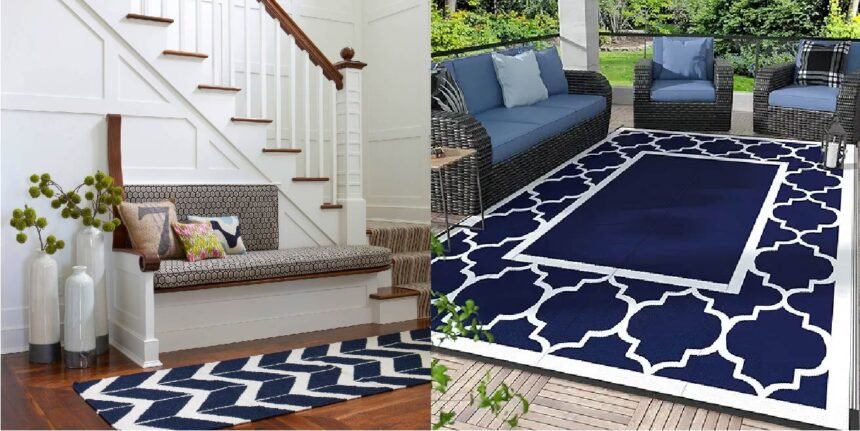Your entryway is the first impression guests have of your home. It sets the tone for the rest of the space, combining functionality with aesthetics. Yet, this vital area is often the most overlooked in terms of design, leading to cluttered, uninviting, or impractical results. To help you create an entryway that is both stylish and functional, here are six common design mistakes to avoid and tips to fix them.
1. Ignoring the Importance of Lighting
The Problem
Poor lighting is one of the most frequent mistakes in entryway design. A dark or overly dim entryway creates an unwelcoming atmosphere and makes it difficult for people to find their way in and out.
The Solution
- Layered Lighting: Combine ambient lighting with task and accent lighting. Use overhead fixtures for general brightness and pair them with statement pieces like wall sconces or table lamps.
- Maximize Natural Light: If your entryway has windows or door glass panels, keep these clear and unobstructed. Natural light adds warmth and makes the space feel more open.
2. Overlooking Storage Needs
The Problem
Without proper storage solutions, an entryway can quickly become messy and disorganized. Shoes, bags, and coats often pile up, creating unnecessary clutter.
The Solution
- Built-In Storage: Incorporate cabinets, shelves, or built-in benches to provide organized spaces for items like shoes and bags.
- Hooks and Racks: Wall-mounted hooks for coats or a dedicated rack for umbrellas are simple but effective.
- Baskets and Trays: Use baskets under benches or trays on entry tables to corral smaller items.
3. Forgetting to Define the Space
The Problem
A poorly defined entryway can feel disconnected or even chaotic, particularly in open-concept homes where the lines between rooms are blurred.
The Solution
- Create a Visual Anchor: Use a bold rug or runner to delineate the entryway from adjoining spaces. Choose patterns or colors that complement your décor.
- Add a Console Table or Seating: Anchor the area with a console table or a bench to designate the entryway zone.
- Decor Accents: Items like mirrors, artwork, or statement vases can further establish the space as purposeful and inviting.
4. Neglecting Practicality
The Problem
Designing an entryway that values style over function can lead to problems when the space doesn’t serve its primary purpose—welcoming and organizing guests.
The Solution
- Choose Durable Materials: Your entryway flooring and furniture should withstand heavy traffic. Opt for sturdy options like weather-resistant rugs or hard-wearing tile and wood floors.
- Easy-to-Clean Finishes: The surfaces in your entry should be simple to maintain. Consider finishes that repel dirt or can be wiped down quickly.
- Functional Décor: Incorporate décor that serves a purpose. For instance, a sleek tray for keys on a console table marries design with practicality.
5. Underusing Vertical Space
The Problem
Because entryways often have limited square footage, failing to utilize vertical space can lead to an inefficient and cramped area.
The Solution
- Wall Hooks and Pegboards: Install hooks or pegboards to make use of vertical real estate. These are perfect for hanging coats, bags, or even decorative items.
- Tall Storage Solutions: Opt for tall cabinets or shelves that provide ample storage without taking up horizontal space.
- Mirrors for Height: A large vertical mirror not only adds visual height but also reflects light, making the entryway seem larger and more open.
6. Ignoring Windows or Natural Features
The Problem
Entryways that fail to consider existing features such as windows or architectural details miss out on natural light, ventilation, or aesthetic opportunities.
The Solution
- Highlight Architectural Features: If your entryway has unique windows or intricate molding, emphasize these elements through strategic placement of furniture and lighting.
- Dress Windows Thoughtfully: Use light, breathable curtains or simple blinds that enhance rather than obstruct natural light. For instance, designing around beautiful windows in Salt Lake City often involves selecting treatments that complement mountain or urban landscapes.
- Balance Views and Privacy: If privacy is a concern, choose frosted glass or semi-transparent window films to maintain light flow while protecting your home from outside visibility.
Designing a Welcoming, Stylish Entryway
Your entryway is more than just a passage—it’s an opportunity to set the tone for your home while providing practical solutions for everyday life. By planning thoughtfully and avoiding these common mistakes, you can create a space that’s not only functional but also leaves a lasting impression on your guests. Combining smart organization, good lighting, durable materials, and attention to architectural details ensures your entryway becomes one of the most versatile and stylish parts of your home.







